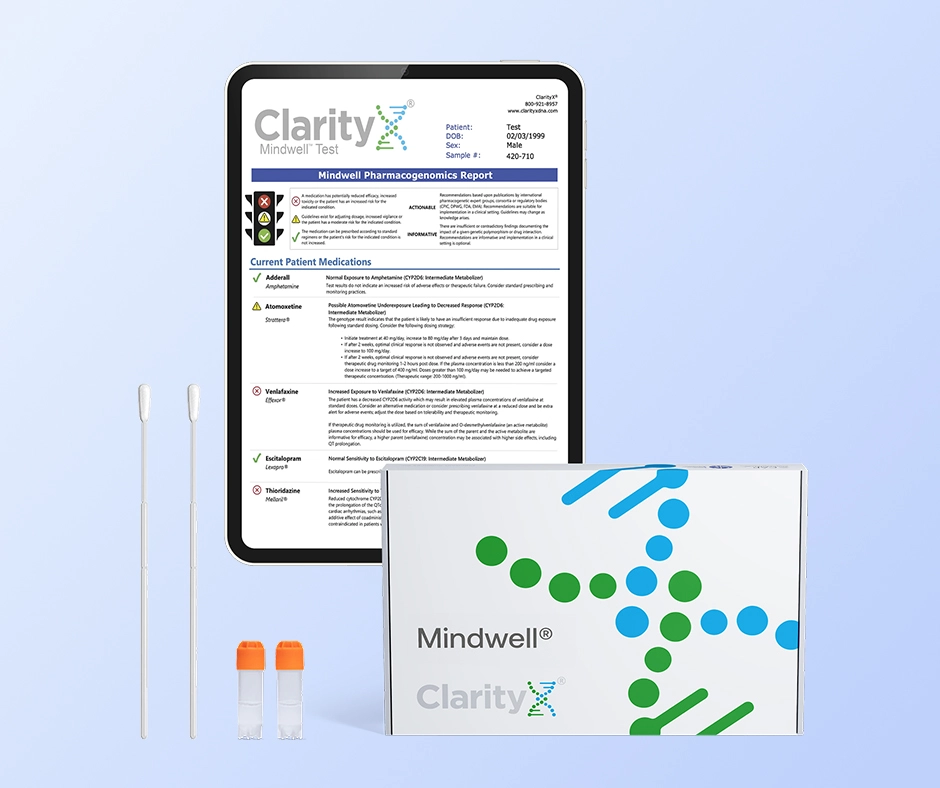Key Highlights
- Hydrocodone begins to work 20-30 minutes after taking it for most people.
- You usually feel the strongest effects of hydrocodone 1-2 hours after you take it.
- It's important to know how hydrocodone is absorbed and how it's processed in the body to predict how fast it will start working.
- Individual health conditions and other medications can change how well hydrocodone works.
- Following the right dosage and using the proper techniques are key to getting the best effects of hydrocodone.
- Knowing the signs of overdose and being aware of drug interactions are essential for using hydrocodone safely.
Introduction
Hydrocodone is a powerful pain medicine often prescribed by doctors to help control severe pain. Pain management needs vary from individual to individual, but when hydrocodone has been prescribed in recent years, it has often been at the lowest dose and shortest amount of time possible.
Hydrocodone tends to work fairly quickly for most purposes, but some important factors can influence the medication's safety and effectiveness. Let’s take a look at hydrocodone more closely to help ensure it’s used safely and effectively.
Understanding Hydrocodone
Hydrocodone is a strong pain medicine often used to treat moderate to severe pain. Due to a high potential for dependence and abuse, it is a controlled substance. Using the medication as prescribed is vital for maintaining safety.
Hydrocodone works by attaching to opioid receptors in the central nervous system, helping to reduce pain signals. The risks of opioids have become well-documented in recent years, and thankfully, overdose deaths (for which opioids like hydrocodone are largely responsible) may be beginning to decline. It’s vital to ensure medications like hydrocodone continue to be used responsibly to help promote better safety.
When opioid pain relievers are used consistently, resistance and dependence can develop. This means higher doses are needed to achieve the same effect for things like pain relief. Unfortunately, our bodies do not become resistant to the effects of opioids on things like respiratory depression, or difficulty breathing. Respiratory depression is ultimately the reason opioid overdoses are fatal. So, as opioid resistance for pain relief increases and higher doses might be used, the risk of overdose remains present throughout therapy.
Opioids like hydrocodone are highly effective for pain management, so it’s important to achieve a healthy balance when strong pain management is needed. Let’s dive into hydrocodone in some more detail.
What is Hydrocodone?
Hydrocodone is a narcotic pain reliever that belongs to a class of medications called opioids. Hydrocodone is semi-synthetic, meaning some changes are made to molecules like codeine (which is converted to morphine in the body) to arrive at the final product. Despite these changes, hydrocodone is still considered similar to morphine. It is a potent pain reliever.
The Role of Hydrocodone in Pain Management
Hydrocodone is a centrally-acting pain reliever that affects pain signals sent by the nervous system. It can be helpful for severe pain that other medications do not control well.
Doctors often prescribe hydrocodone for relatively rapid pain relief. Because it works relatively quickly, it’s often meant to be used as needed for breakthrough pain. It may be prescribed to help manage pain after certain types of surgical procedures or pain associated with injuries. In some cases, it may also be a part of a larger strategy for managing sources of chronic pain. In all cases, it’s critical to follow the prescribed instructions carefully. Particularly when someone has never used an opioid before, hydrocodone is often prescribed in small quantities intended for a short period of time.
Pharmacokinetics of Hydrocodone
When hydrocodone is taken, it gets absorbed into the bloodstream. The liver mainly breaks it down, turning it into an active form called hydromorphone, which helps with pain. Most of it leaves the body through the kidneys, while a small amount goes out in feces. How quickly it works can change based on the dosage forms, such as liquids or immediate and extended-release tablets. Release mechanisms can also affect how long people feel relief from pain.
Absorption and Onset of Action
Hydrocodone is quickly taken in by the stomach and intestines. Most people feel its effects about 20 to 30 minutes after taking it by mouth. Liquids are more readily available for absorption and may produce effects a few minutes faster on average.
Hydrocodone works by connecting to opioid receptors in the central nervous system, which helps relieve pain. How fast it works can be different for each person. This difference may come from differences in metabolism (hydrocodone is activated to hydromorphone through metabolic processes) and changes in absorption rates caused by different types of food in the stomach.
Genetics can be a helpful predictor of how effective or safe hydrocodone might be due to changes in the activity of different enzymes like CYP2D6.
Metabolism and Elimination
Hydrocodone is primarily processed in the liver by CYP2D6 enzymes, which convert it into hydromorphone, its active form. Following this, it undergoes glucuronidation before being eliminated by the kidneys. The half-life, or the time it takes for the drug to reduce by half, ranges from 3.5 to 4 hours. This duration can vary between individuals due to differences in metabolic rates; if a person has diminished liver or kidney function, it may take longer to eliminate hydrocodone. Understanding these processes is crucial for determining the appropriate timing for doses. Proper timing ensures effective pain relief while minimizing the risk of side effects.
Factors Affecting Hydrocodone Effectiveness
Individual health conditions, other medications you are taking, and how you use hydrocodone can greatly affect how well it works. Factors like liver or kidney disease can change how your body processes hydrocodone, which may also affect safety and pain relief. Mixing hydrocodone with certain drugs, especially CNS depressants, can cause dangerous or even deadly side effects. Taking the right dose for the right amount of time is important to get the most benefit and avoid risks.
Individual Health Conditions
When looking at health issues, especially for elderly patients, it's important to consider conditions like liver disease or kidney disease. These can affect how quickly hydrocodone works for pain or how much might build up in the system, potentially leading to changes in pain relief or the risk of side effects.
Sensitivity to hydrocodone’s effects may be altered, affecting the doses needed for pain relief and how safe the medication is likely to be.
Concurrent Medications
Hydrocodone can interact with different medications, which might affect how well it works. However, a primary concern is safety. When used with CNS depressants (e.g., alcohol, benzodiazepines) or other opioids, it can cause respiratory depression.
Respiratory depression means the signals your body sends to keep you breathing slow down. It can be fatal if these signals slow down too much or stop completely.
Dosage and Administration Techniques
When taking hydrocodone, follow the prescribed dosage to get the best results. Hydrocodone is often meant to be used as needed for the relief of breakthrough pain for a short period of time. Individual needs vary. Always ask your healthcare provider if you have questions about your dosage or how to administer it.
Hydrocodone Dosage Guidelines
Recommended dosages for different patients can change, but they are usually about 5-10 mg every 4-6 hours as needed to relieve pain. Do not make adjustments to your dosage without consulting a healthcare provider. If your pain relief is inadequate, your healthcare provider may help you adjust your dose or implement additional strategies to help you. If you feel as though your pain can be managed without hydrocodone, talk with your healthcare providers about the best way to dispose of your medication safely. Many communities have take-back programs.
Side Effects and Precautions
Common side effects of hydrocodone are:
- Dizziness
- Drowsiness
- Constipation
- Nausea
- Blurred vision
Some of these side effects can increase the risk of falls, so it’s important to talk with your healthcare providers about how you’re feeling (particularly if part of your concern is related to mobility). Striking a balance between managing pain, improving mobility, and preventing injury is vital.
Managing Side Effects and When to Seek Help
Some side effects of hydrocodone are bothersome but manageable. If you notice constipation, staying hydrated, eating fiber-rich foods, or using over-the-counter stool softeners or laxatives may help. If you’ve been unable to produce a stool for several days, contact your healthcare provider.
Dizziness and drowsiness can become problematic, particularly if you feel as though you may fall. Talk with your doctor about daytime drowsiness if it occurs.
Shallow or labored breathing is a potential sign of an overdose. This requires immediate medical attention.
Recognizing Signs of Overdose
Signs of a hydrocodone overdose include:
- Shallow breathing
- Severe drowsiness
- Small pupils
- Weak muscles
- Cold and sweaty skin
- Slow heartbeat
In serious cases, symptoms can lead to a loss of consciousness, a coma, or even death. It's very important to get medical help right away if you see these signs. Also, be careful about how hydrocodone might interact with other substances, as this could make the symptoms of overdose worse. If you think someone has overdosed, get emergency help right away to avoid any serious problems. Early awareness and quick action are very important in handling an opioid overdose.
If you think someone has taken too much hydrocodone, act fast. Call emergency services right away. While you wait for help, stay next to the person and watch their breathing. If they can stay awake, keep them sitting up. Do not give them anything to eat or drink unless a doctor tells you to. Give important details to the emergency responders, like how much they took and when they took it. Be ready to share any other necessary information quickly and clearly to ensure they get the right help on time.
Hydrocodone Interaction with Other Drugs
Mixing hydrocodone with CNS depressants, including alcohol, benzodiazepines (e.g., lorazepam), or other opioids, can cause respiratory depression or even an overdose. Also, some medications, such as muscle relaxants or antihistamines, can make the side effects of hydrocodone worse. Always check with your healthcare provider before taking hydrocodone with any other prescription or over-the-counter medicine. Knowing these interactions is key to managing pain safely and effectively.
Safe Drug Combinations
Always check with your healthcare provider to ensure other medications are safe to use with hydrocodone. In general, NSAIDs like ibuprofen or naproxen are okay to use, along with topical pain relievers. Acetaminophen is often combined with hydrocodone, so it’s important to be aware of how much you’re taking over the course of a day. It may be okay to add acetaminophen, but your total dose should not exceed 4 grams within 24 hours.
Conclusion
Hydrocodone is a strong pain reliever that helps with different kinds of pain. While effective, it can also be dangerous so it’s important to be aware of the risks and ensure you’re using the medication safely. Hydrocodone is often prescribed for relatively rapid pain relief for a short period of time. Always check with your healthcare providers to ensure your other medications, including over-the-counter products, are safe to use with hydrocodone.
Lastly when considering treatment options for pain your genetics can also play a vital role in determining which medications will be best suited for you. A simple test can help reduce the trial and error process associated with finding the right medication. Find out more by visiting www.clarityxdna.com
Frequently Asked Questions
How quickly can I expect pain relief after taking Hydrocodone?
Hydrocodone usually takes about 20 to 30 minutes to ease pain. But this time can change. It depends on things like how fast your body processes the drug and how severe the pain is.
Can Hydrocodone be taken on an empty stomach?
You can take hydrocodone with or without food. Taking it with food might help ease stomach discomfort.
What should I do if I miss a dose?
Hydrocodone is often prescribed “as needed.” The primary concern is ensuring you do not take doses too close together. If you’re in pain and it’s been longer than six hours since your last dose, it’s generally safe to take another. However, talking with your healthcare provider about the best plan for your needs is important.
Are there any non-prescription activities that enhance Hydrocodone's effectiveness?
Sources of pain vary. For some, specific physical activity might help strengthen areas that could ultimately help relieve pain. For others, this may be a bad idea. Some pain benefits from hot or cold compresses. Talk with your doctor about your specific source of pain.
How should Hydrocodone be stored to maintain its efficacy?
Hydrocodone should be kept at room temperature. Store it away from direct light and moisture. Make sure it is out of reach of children and pets. Finding alternatives to storing it in the bathroom may help limit exposure to moisture.
References:
https://dailymed.nlm.nih.gov/dailymed/drugInfo.cfm?setid=62be4147-6a72-49e5-9338-10887c65a93a
https://www.ncbi.nlm.nih.gov/books/NBK538530/
https://www.cdc.gov/nchs/nvss/vsrr/drug-overdose-data.htm
https://pubmed.ncbi.nlm.nih.gov/32770580/
https://files.cpicpgx.org/data/guideline/publication/opioids/2020/33387367.pdf
https://clarityxdna.com/blog/learn/cyp2d6-gene-plays-major-role-drug-metabolism/
https://clarityxdna.com/blog/learn/genetic-testing-for-pain-management-medication/





